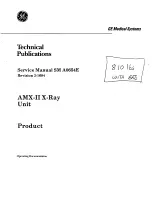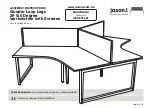
Velp Scientifica
– UDK139 Operating Manual
10004762/B5
110
36 -
Kjeldahl’s method to determine total nitrogen in crude oil,
lubricants and fuel oils (ASTM, D3228-96)
Combined nitrogen in petrochemical fuels gives origin by combustion to nitrogen
oxides whose emission in the atmosphere is subjected to limitations.
Combustions occurring at relatively low temperatures (1400-1700 °F, 750-950°C)
produce nitrogen oxides mostly from fuel-bound nitrogen and not from atmospheric
nitrogen. The considered group of products does contain nitrogen compounds with
N-N and N-O linkages, which are difficult to be destroyed by the commonly used
conditions of mineralization. Moreover, oil products are characterized by strong
foaming capacity.
Both kinds of problems are overcome by the use of heating blocks with ramps
heating and by long digestion times in the order of many hours.
Procedure
1) Sample
1-1,5 g of homogeneous sample, weighed with a proximation of 0,1 mg.
It’s suggested to use nitrogen free weighing boats
(Cod. Art. CM0486000, CM0
486001). It’s suggested furthermore to introduce the
boat in the test tube immediately after weighing, to avoid the raise of oil by capillarity
along the folded sides of the boat.
The sample containing boat is slipped along the side of the digestion tube, in order to
avoid its dispersion before reaching the bottom.
2) Reagents for mineralization:
Add to each sample in the test tube one of the following group of reagents:
2 catalyst tablets ST (code CT0006609)
18 ml concentrated sulphuric acid (96-98%)
10 ml hydrogen peroxide (H
2
O
2
) 35% (130 Voll.)
3) Procedure for the mineralization:
Shake each tube to mix the content, better if before the addition of hydrogen
peroxide.
Start heating increasing the temperature of 100°C every hour during 4 hours, up to
420 °C.
Use temperature ramps.
Maintain the temperature at 420 °C during 30 min and then let cool the tubes to 50-
60°C or better up to room temperature.
297














































